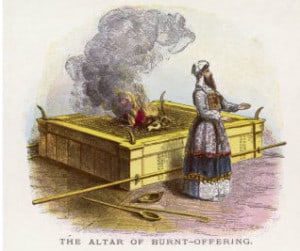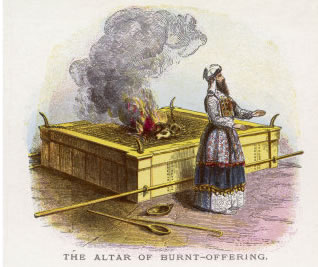Parshat Tzav (Leviticus 6:1-8:36) — What does the burnt offering and its ashes teach us about relationship with G-d?
Overview and Study Guide For Parshat Tzav
 In this Torah portion, G-d continues to explain to Moshe as to how to instruct Aaron and his sons regarding their duties and rights as Kohanim (priests). Moshe is also given instructions regarding the sacrifices. A few are related to sins while most are about relationship issues with G-d.The sacrifices that are to be done in the temple service include the the OLAH or the Ascending Offering; the Shlamim or the Peace offering, the Chatat or Sin, and Asham or Guilt Offerings; and the Meal Offering.
In this Torah portion, G-d continues to explain to Moshe as to how to instruct Aaron and his sons regarding their duties and rights as Kohanim (priests). Moshe is also given instructions regarding the sacrifices. A few are related to sins while most are about relationship issues with G-d.The sacrifices that are to be done in the temple service include the the OLAH or the Ascending Offering; the Shlamim or the Peace offering, the Chatat or Sin, and Asham or Guilt Offerings; and the Meal Offering.
Why is the Olah the first one mentioned?
The fire on the external Altar must be kept burning at all times.
What are we to learn from that constant fire?
What can we learn from the fact that the temple service begins in the external altar and not withinthe Heichalor Holy?
Most of the sacrifices are a shared meal with G-d. The Kohanim eat the meat of the Sin and Guilt Offerings and what is left of of the Meal Offering. The person that brings the Peace offering is eaten partially by that individual and partially by the Priest. Yet it is important to note that these shared meals necessitate that the person eating is a ritually pure persons. They need to be eaten in a specified location and within specified time.
What does the shared aspect of many of these sacrifices teach us about our relationship with G-d?
Why are these necessary; ritually pure persons, a specified location and a specified time.
Aaron and his sons then prepare within the Sanctuary for seven days, as part their initiation into their priestly role.
Why seven days ..or more importantly why did the initiation not occur during the seventh day?
Listen to this week’s Podcast:
